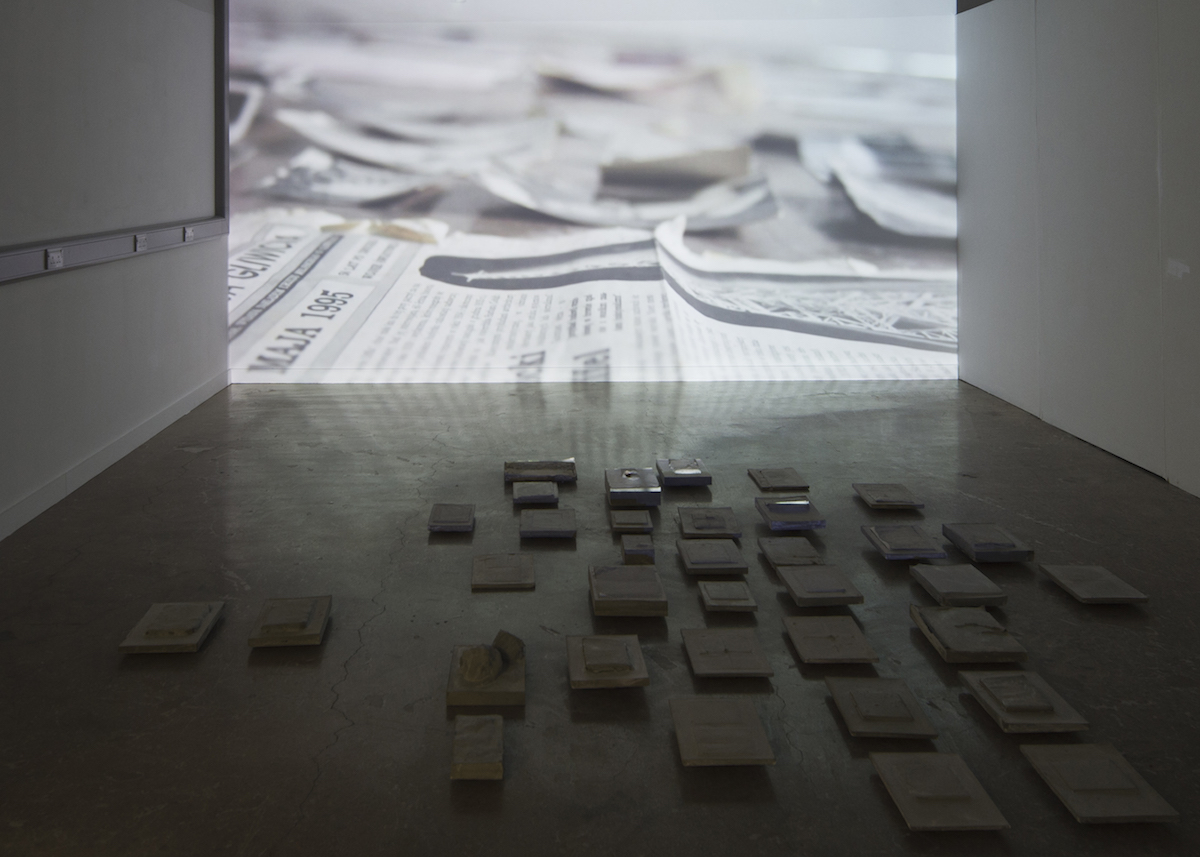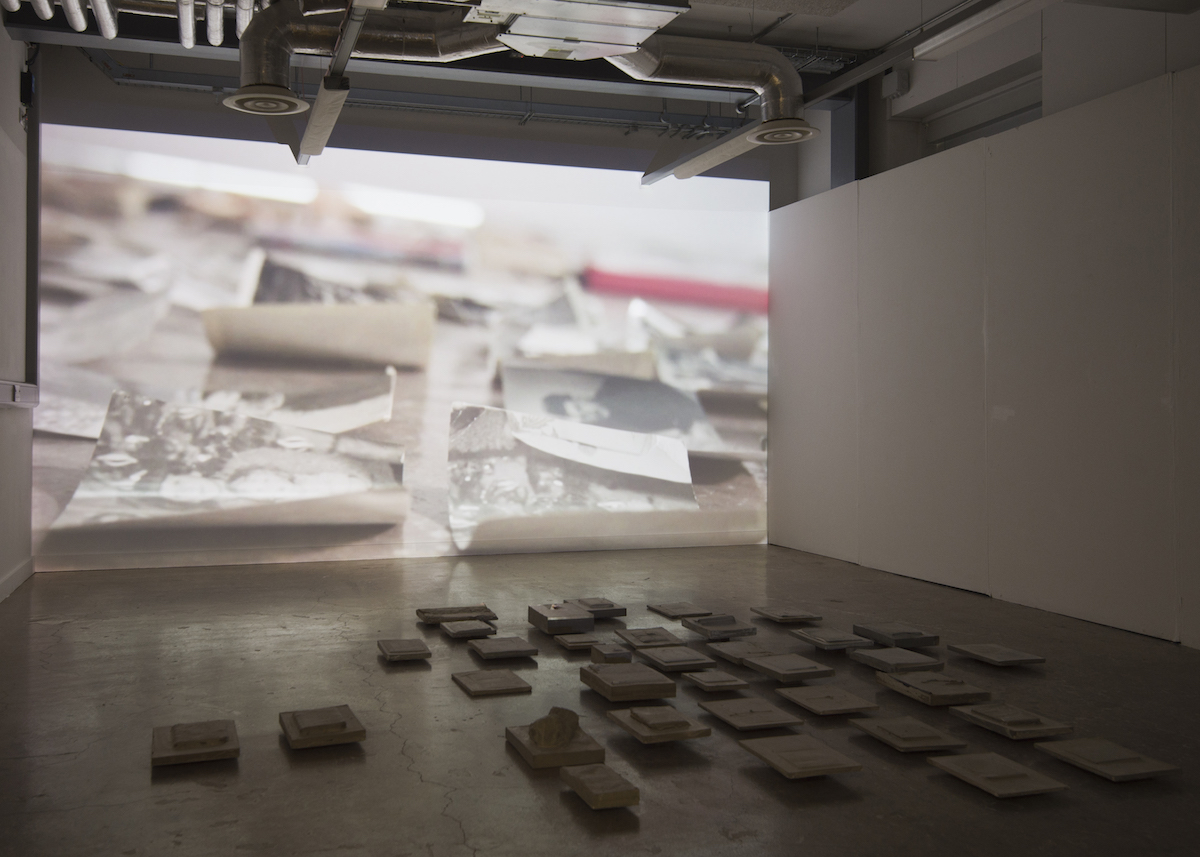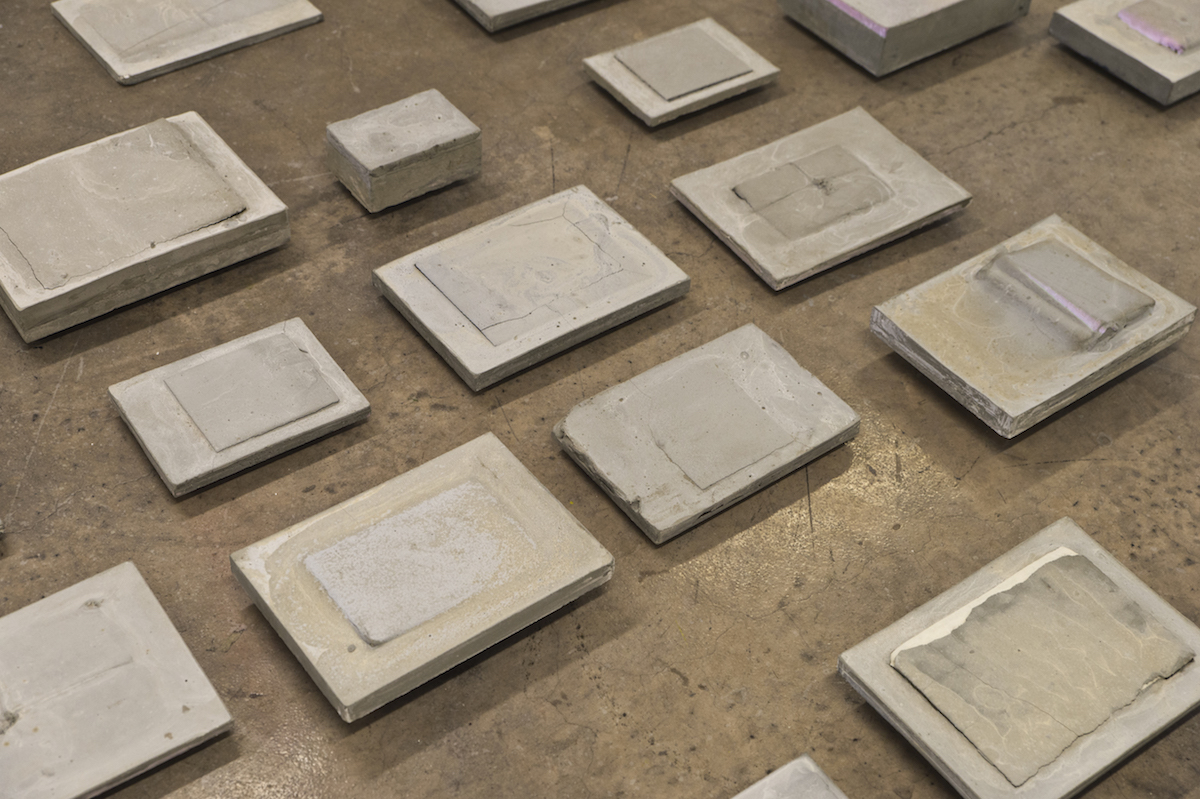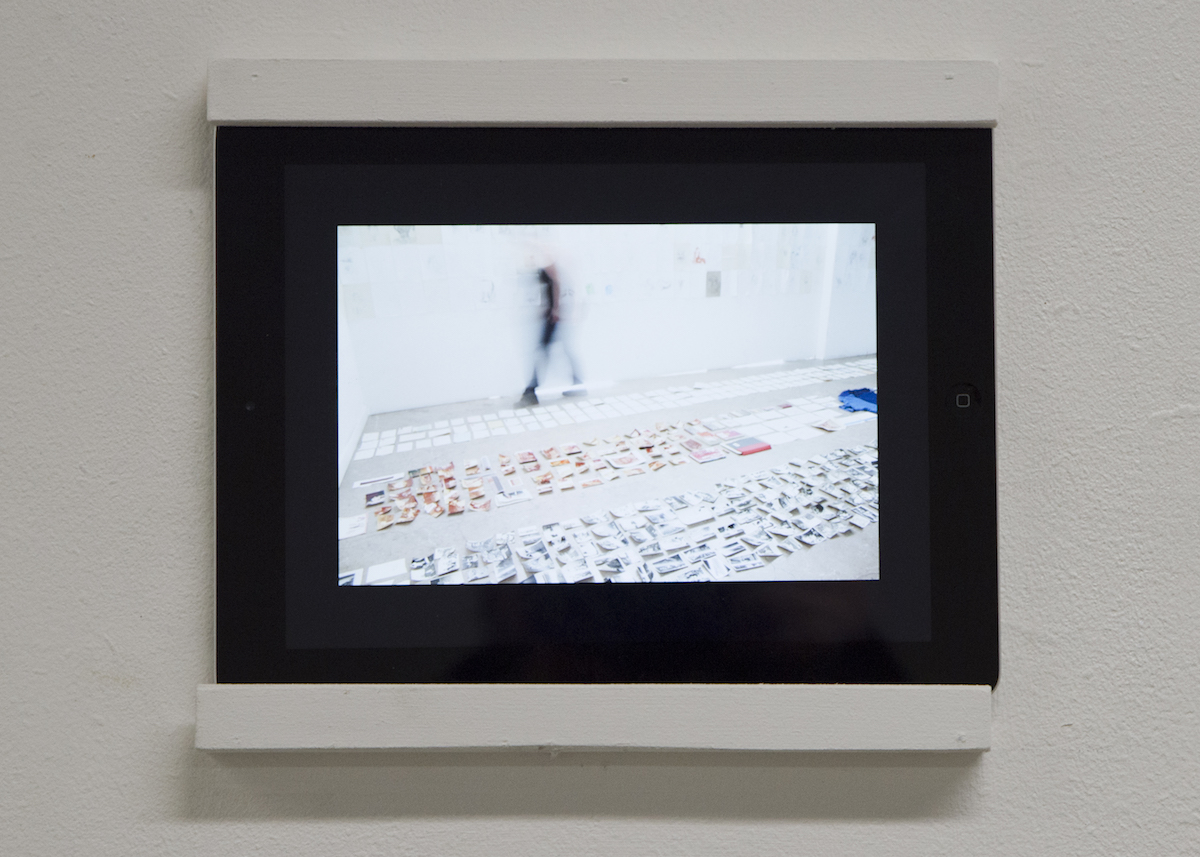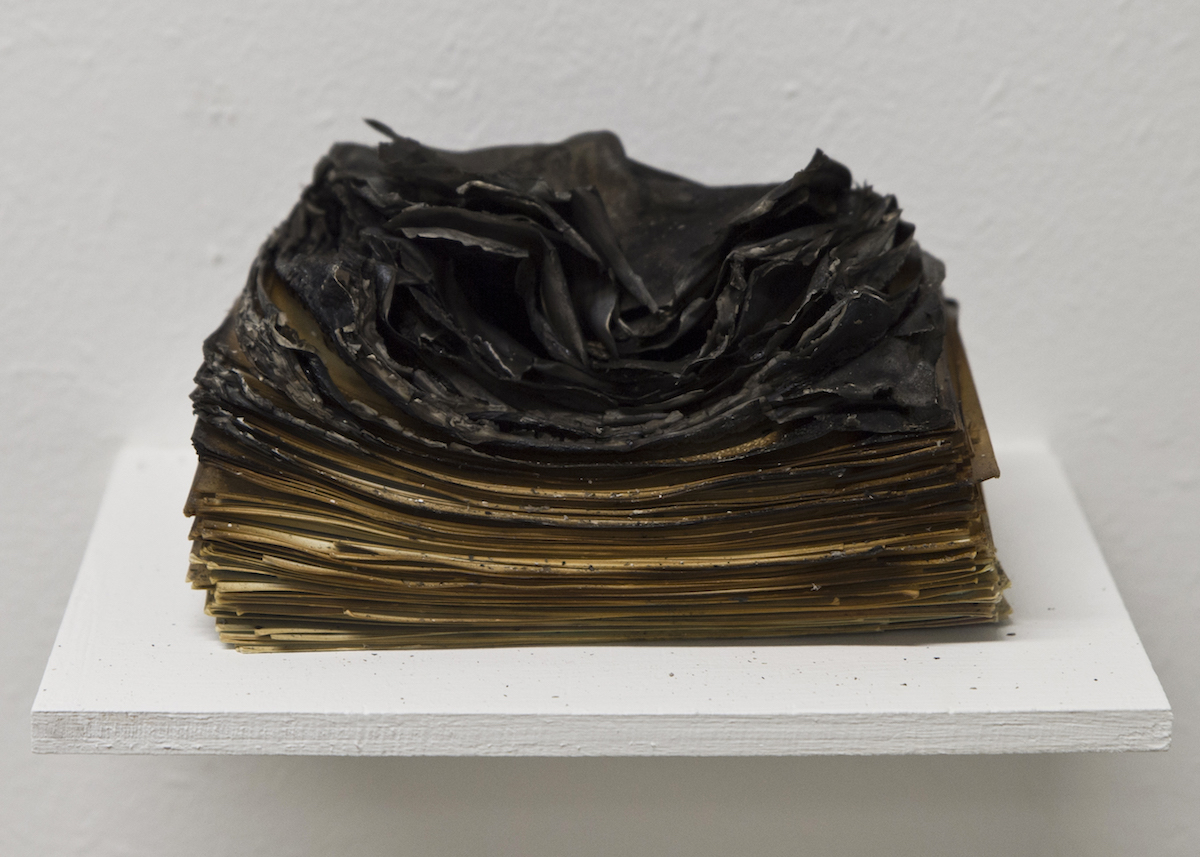Alissa Kleist: Marta Dyczkowska
The camera brings us past rows of objects laid out on a concrete studio floor. The curling edges of family photographs and old documents, picture frames, books, garments, drawings, and sketchbooks filmed at close range slowly pass by, projected on to the full length of the back wall of the darkened exhibition space.
We do not linger on children’s faces in an image, a folded blue jumper, the cover of a book. This is not an exercise in documenting individual items or a representation of an overly sentimental or nostalgic experience, but a sensitive study of the collection of objects that Marta Dyczkowska brought with her when emigrating from Poland 15 years ago and when, soon after, her mother passed away.
The light of the projected image illuminates around thirty tabular sculptures that appear to float just above the ground on the floor in front of the film. Their soft gray surfaces hint at shrouded, enigmatic, hidden things, their details obscured by the casting process. On a small screen in the corner of the room, a blurred figure, presumably the artist, silently moves in looped stop-motion amongst the objects in the video, neatly arranged like artefacts discovered at an excavation.
We form bonds with objects and infuse them with our identities, allowing them to connect us to the external world, to the people and places that shape us. Marta Dyczkowska’s installation explores the systems that we construct to help us confront and process loss and the human urge to create external receptacles for feelings, memories, and relationships.
She presents an intimate and at times raw body of work that contains evocative moments – the charred remains of a small book displayed on a slim wall-mounted shelf; a dark hollow in one of the floor-based sculptures – that bypass rational definition and are imbued with a sense of indescribable loss and signify a state of displacement. Though originally intended as a ‘parting’ from the things that she holds dear – perhaps to generate a cathartic departure from the past – her work instead provides a monumentalization of our longing for the enduring bonds to people and places no longer present but remembered.
